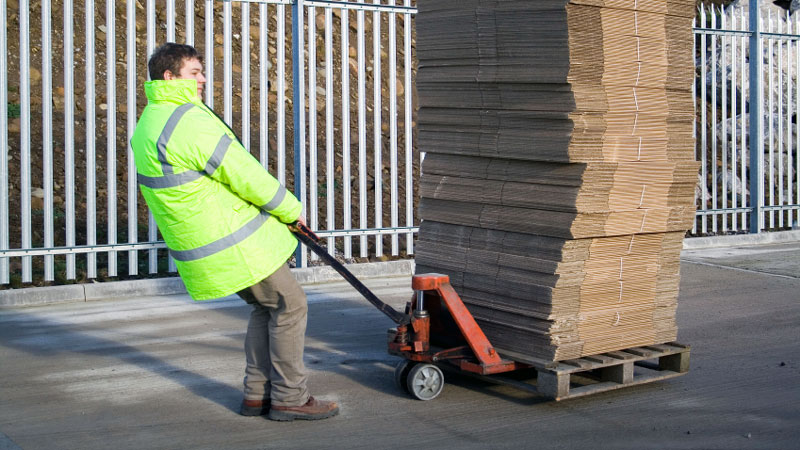If you work in the construction industry, you’ll be aware of the amount of heavy lifting that the job requires. Manual handling causes over one third of all injuries in the workplace. These injuries include musculoskeletal disorders such as injuries to the joints, legs and arms, and repetitive strain injuries of various kinds. There’s a risk of bodily harm if lifting, lowering and carrying activities aren’t carried out correctly, and this is why pallet trucks are of such paramount importance in the construction industry. They are suitable for lifting and moving heavy items, and stacking boxes or pallets.
Employer Responsibilities
Your employer should provide you with the correct pallet truck or stacker for the task in hand, and instructions on how to operate it safely and efficiently. If you are an employer, it’s important that your staff have a high quality pallet truck to work with. They can be purchased from a variety of retailers including Handling Equipment online. All equipment should comply with EU standards of safety and quality.
Visual Checks
Before using a pallet truck or stacker, it’s important to conduct a visual check to ensure that the equipment is in optimum working condition. Pay special attention to the wheels, forks, handle, brakes and lift and lever controls. If you operate a damaged or faulty truck, you’re likely to cause harm to yourself, another employee or a member of the public. Only the authorized and qualified people should be permitted to undertake repairs of a pallet truck.
Correct Operation
Hand pallet trucks should only be operated from the designation position. If you’re unsure of what this is, you should contact your employer and request the relevant training. It’s very dangerous to carry passengers on a pallet truck or to place any part of your body under the forks, the load or in the lifting mechanism. The loads you intend to carry should not be unstable or loosely stacked. Special care is required when handling long, high or wide loads, and it’s essential that you check the capacity plate before attempting to carry anything.
Overloading the truck may cause malfunctions such as losing the load, tipping the truck or striking a bystander. The load should be evenly distributed, with the heaviest point situation at the halfway point of the length of the forks. Remember that the forks should be at the lowest height when the truck is not being used, to prevent accidental injury of others.
View the original article and our Inspiration here


Leave a Reply